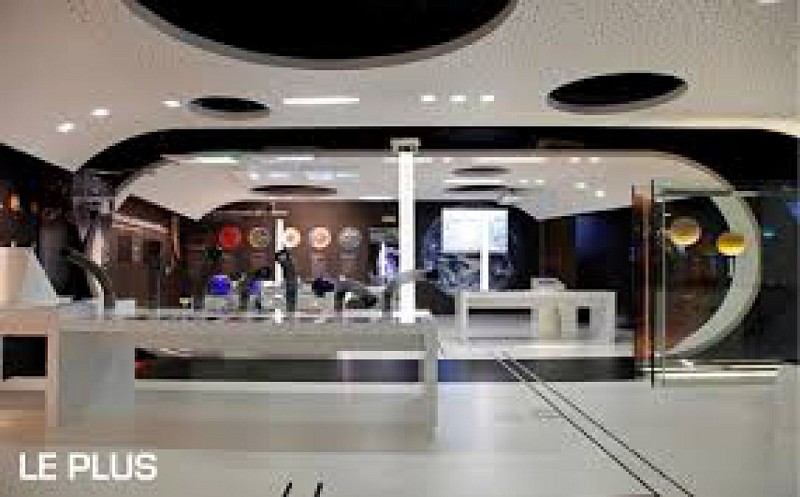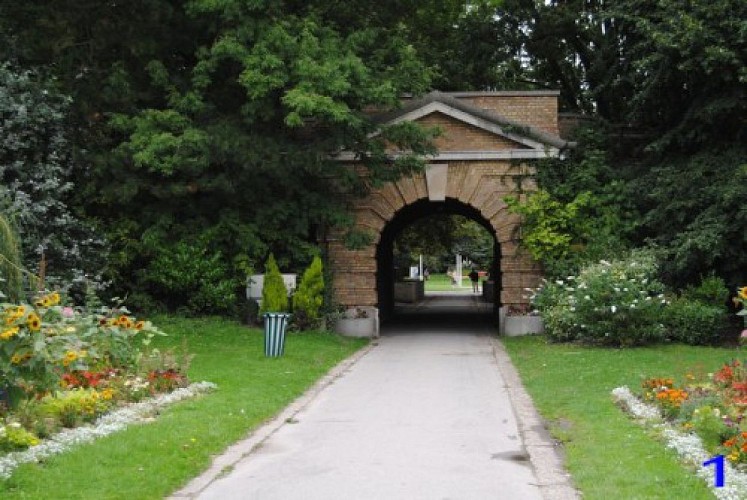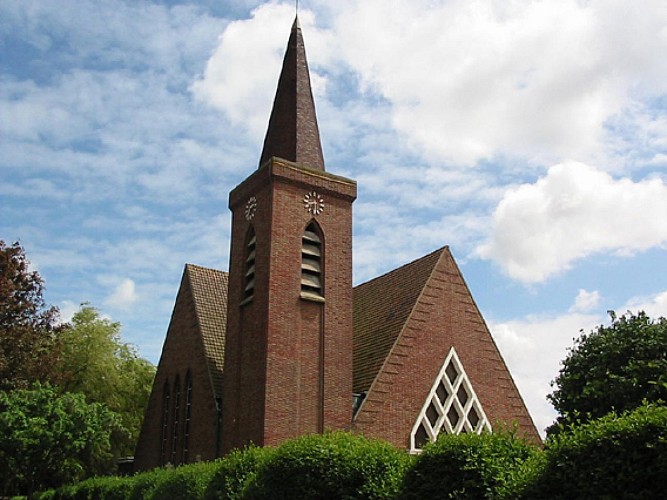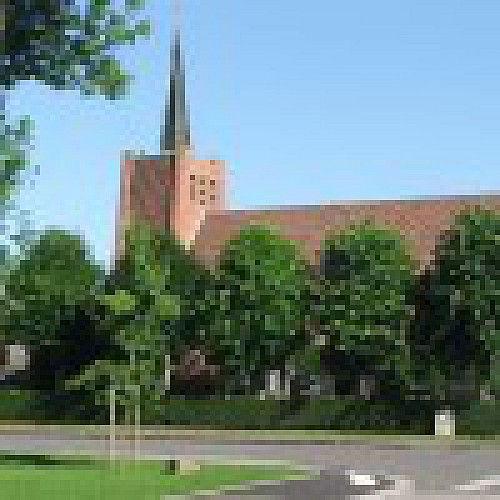Alert
Alerts
Type of practice
Racing biking
Easy
2h
Electric bicycle
Easy
2h
Cycling
Easy
2h
Mountainbiking
Easy
2h
Presentation
Description
Map
Points of interest
Cirkwi brief's
Ratings and reviews
See around
Bike tour Dunkirk-Spycker
IGN cards

2302SB - DUNKERQUE GRAVELINES
Editor : IGN
Collection : TOP 25 ET SÉRIE BLEUE
Scale : 1:25 000
13.90€

101 LILLE CALAIS LE TOUQUET-PARIS-PLAGE PNR DES CAPS ET MARAIS D'OPALE
Editor : IGN
Collection : TOP 100
Scale : 1:100 000
8.40€

D59-62 NORD PAS-DE-CALAIS
Editor : IGN
Collection : CARTES DÉPARTEMENTALES IGN
Scale : 1:150 000
5.90€

NR01 HAUTS-DE-FRANCE
Editor : IGN
Collection : CARTES RÉGIONALES IGN
Scale : 1:250 000
6.80€

EUROPE
Editor : IGN
Collection : DÉCOUVERTE DES PAYS DU MONDE IGN
Scale : 1:2 500 000
7.00€
Description
Discover the South West Dunkirk.
You will discover the lake of Armbouts Cappel, the planetarium of Cappelle la Grande and the fort of Petite Synthe
Technical Information
Racing biking
Difficulty
Easy
Duration
2h
(1d)
Dist.
19 km
Type of practice
Racing biking
Easy
2h
Electric bicycle
Easy
2h
Cycling
Easy
2h
Mountainbiking
Easy
2h
Show more
Altimetric profile
Starting point
1T
Rue du Lac
,
59380
Armbouts-Cappel
Lat : 50.99753Lng : 2.33501
Points of interest
Data author

proposed by
xavier lesaege
France
The Cirkwi brief
Discover Dunkerque: Unique Bike Journey Revealed
Embark on an electrifying cycling adventure through the southwest of Dunkerque, meticulously designed by Xavier Lesaege. This route not only takes you past the serene Lake of Armbouts Cappel but also leads you to the awe-inspiring Planétarium of Cappelle la Grande and the historical Fort of Petite Synthe. What sets this journey apart is not just the path itself but the fusion of nature, science, and history that it encapsulates. Imagine pedaling through the scenic backdrop of Dunkerque, with each stop unfolding a new layer of discovery, from the secrets of our Universe at PLUS to the historical fortifications that tell tales of the past.
Technical Insights on the Cycle Path
This cycling route stretches approximately 18.75 kilometers, with a minimal elevation ranging between 5 to 7 meters. The highest point reaches merely 10 meters, making it a relatively flat course suitable for cyclists of all levels. The manageable distance and slight elevation gain ensure a pleasant ride, while the terrain's easy nature allows enthusiasts to focus on the surrounding landscapes and attractions rather than the physical challenge. Crafted by Xavier Lesaege, this itinerary is ideal for a leisurely exploration of Dunkerque's southwestern gems on two wheels.
Seasonal Tips for Cycling Enthusiasts
Embarking on this cycle journey requires not just enthusiasm but also preparation, especially when considering the variable weather conditions throughout the year. For summer adventurers, lightweight clothing and sunscreen are paramount, while spring and autumn call for light layers to adapt to the cooler mornings and evenings. Winter riders should prioritize visibility and warmth, incorporating reflective gear and thermal wear. Despite the flat terrain, ensuring your bicycle is well-maintained and equipped with a repair kit is essential. Always carry water and a map, regardless of the season, to enhance your cycling experience.
Exploring Dunkerque's Rich Heritage
Dunkerque, nestled in the heart of the Hauts-de-France region, carries a profound historical and cultural significance. Originating as a fishing village in the 10th century, it evolved into a pivotal maritime and military stronghold over the centuries. The cycle route through Armbouts Cappel, Cappelle la Grande, and Petite Synthe offers more than just physical activity; it provides a unique opportunity to traverse through time. From the tranquil Lake of Armbouts Cappel to the educational voyages at the Planétarium and the historical echoes at Fort de Petite Synthe, this journey encapsulates the essence of Dunkerque's rich legacy.
Climate Guide for Dunkerque Visitors
The climate in Dunkerque is classified as an oceanic climate, characterized by mild temperatures and moderate precipitation throughout the year. Summers are pleasantly warm, making it an ideal season for cycling enthusiasts to explore the route. However, spring and autumn offer uniquely refreshing experiences with less crowded paths and the beauty of seasonal transitions. Winters, albeit cooler and wetter, can still provide serene cycling conditions for the well-prepared traveler. Accordingly, the best times to undertake this cycling journey are during late spring to early autumn, optimizing both weather conditions and scenic enjoyment.
Embark on an electrifying cycling adventure through the southwest of Dunkerque, meticulously designed by Xavier Lesaege. This route not only takes you past the serene Lake of Armbouts Cappel but also leads you to the awe-inspiring Planétarium of Cappelle la Grande and the historical Fort of Petite Synthe. What sets this journey apart is not just the path itself but the fusion of nature, science, and history that it encapsulates. Imagine pedaling through the scenic backdrop of Dunkerque, with each stop unfolding a new layer of discovery, from the secrets of our Universe at PLUS to the historical fortifications that tell tales of the past.
Technical Insights on the Cycle Path
This cycling route stretches approximately 18.75 kilometers, with a minimal elevation ranging between 5 to 7 meters. The highest point reaches merely 10 meters, making it a relatively flat course suitable for cyclists of all levels. The manageable distance and slight elevation gain ensure a pleasant ride, while the terrain's easy nature allows enthusiasts to focus on the surrounding landscapes and attractions rather than the physical challenge. Crafted by Xavier Lesaege, this itinerary is ideal for a leisurely exploration of Dunkerque's southwestern gems on two wheels.
Seasonal Tips for Cycling Enthusiasts
Embarking on this cycle journey requires not just enthusiasm but also preparation, especially when considering the variable weather conditions throughout the year. For summer adventurers, lightweight clothing and sunscreen are paramount, while spring and autumn call for light layers to adapt to the cooler mornings and evenings. Winter riders should prioritize visibility and warmth, incorporating reflective gear and thermal wear. Despite the flat terrain, ensuring your bicycle is well-maintained and equipped with a repair kit is essential. Always carry water and a map, regardless of the season, to enhance your cycling experience.
Exploring Dunkerque's Rich Heritage
Dunkerque, nestled in the heart of the Hauts-de-France region, carries a profound historical and cultural significance. Originating as a fishing village in the 10th century, it evolved into a pivotal maritime and military stronghold over the centuries. The cycle route through Armbouts Cappel, Cappelle la Grande, and Petite Synthe offers more than just physical activity; it provides a unique opportunity to traverse through time. From the tranquil Lake of Armbouts Cappel to the educational voyages at the Planétarium and the historical echoes at Fort de Petite Synthe, this journey encapsulates the essence of Dunkerque's rich legacy.
Climate Guide for Dunkerque Visitors
The climate in Dunkerque is classified as an oceanic climate, characterized by mild temperatures and moderate precipitation throughout the year. Summers are pleasantly warm, making it an ideal season for cycling enthusiasts to explore the route. However, spring and autumn offer uniquely refreshing experiences with less crowded paths and the beauty of seasonal transitions. Winters, albeit cooler and wetter, can still provide serene cycling conditions for the well-prepared traveler. Accordingly, the best times to undertake this cycling journey are during late spring to early autumn, optimizing both weather conditions and scenic enjoyment.
Automatically generated.
Ratings and reviews
To see around




